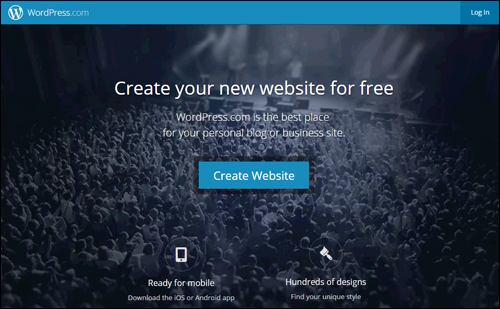
Welcome to Part Three of our Web Traffic Blueprint article series, where we show you how to turn a website into an automated web traffic machine using WordPress.
In Part 1 of this article series, we described the process, and explained why using an expertly configured WordPress website or blog is the key to generating automated traffic …
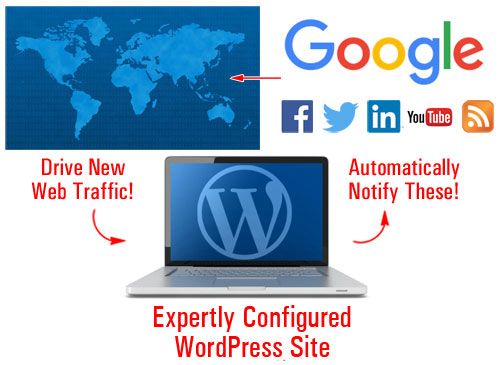
(With an expertly configured WordPress website or blog, all you have to do is add great content on a consistent basis to automatically drive web traffic!)
In Part Two, we focused on the setup phase of the automation process. We explained the best way to start if you don’t have a web presence yet, how to set everything up if you already have a site, and what to do if your existing site was built with WordPress.
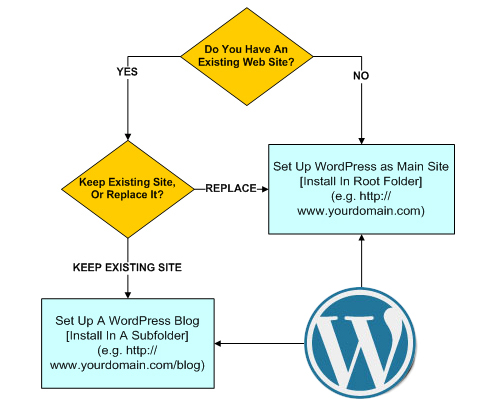
(In Part 2 we show you how to set up a WordPress site on your domain)
In this section of the series, we discuss the configuration phase of the WordPress traffic automation system. We will explain why an expertly configured site is different from a professionally configured site, and how much work needs to be done to ensure that when all is fully set up and configured, web traffic will automatically start flowing as you begin to post new content regularly on your site.
WordPress Traffic System – Configuration
Being able to drive more traffic to one’s website is often cited by business owners as one of their greatest challenges online. With business getting ever more competitive, it’s worth learning about any advantage available to get better results online.
Having the ability to automatically generate traffic on demand can provide you with a tremendous advantage. With an expertly configured website, your business has a significant advantage from the word “go”.
The Configuration Phase Is What Makes All The Difference
There is a significant difference between an expertly configured WordPress site and a site that has been professionally installed and set up by an expert website builder but not necessarily configured to take advantage of everything WordPress can offer you.
Here is a simple way to describe the difference:
With a WordPress website that has been expertly configured you get a web presence with online business marketing automation!
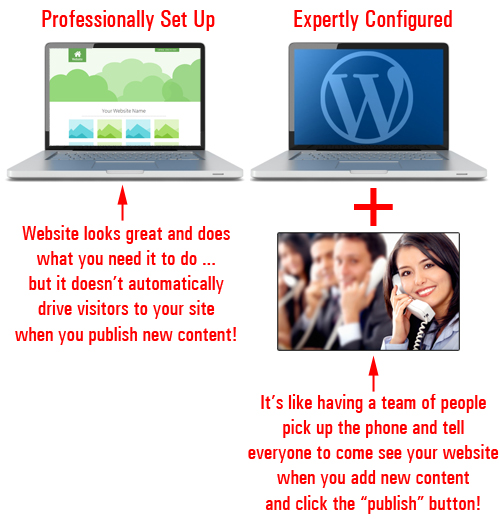
(An expertly configured site gives you a web presence and an automated online business marketing process!)
Not only does a whole lot more labor go into building and integrating an automated online business marketing system into your website, it also takes a special kind of expertise.
To illustrate this point here’s a little story.
Are Experts Worth The Money They Charge?
Everything is humming along in the gizmo workshop when things grind to a sudden halt.
As no one can figure out what’s wrong, the floor manager decides to call in an expert.
Shortly after arriving, the expert walks immediately to the control box. After staring at the circuit board for less than 5 minutes, the expert then takes out a little hammer and makes a gentle tap near the left-hand side of the control unit.
Immediately, the assembly line starts working as before.
The plant manager is grateful and relieved as he thanks the expert, who then leaves just as quickly as he had arrived.
A few days later, the manager receives a request of payment for services for the sum of $5,000.
Bewildered and angry, the manager rings the expert. Demanding to know why they have been charged such a ludicrous fee for so little time spent delivering such minimal amount of work, he promptly requests an itemized invoice to be sent and hangs up.
The next day, an invoice arrives and is placed on the manager’s desk. Upon opening the envelope, this is what he sees:
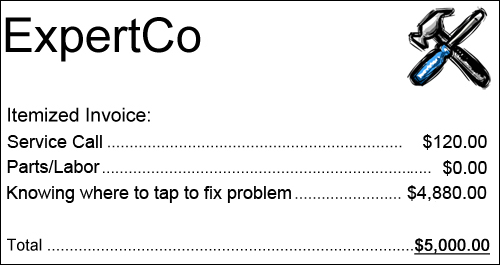
The #1 challenge most businesses face online is being able to consistently drive web traffic to their sites.
In the above story, how much money did the factory stand to lose when production ground to a halt and no one in the business had the expertise to fix it? Did the expert not have the right to get paid fairly for spending years building up the knowledge and expertise that allowed him to immediately assess and avert a crisis?
Similarly, if you could have a web site set up so all you have to do is publish new content and search engines, social media and dozens of other web properties would be instantly notified, how much time and money would this save you?
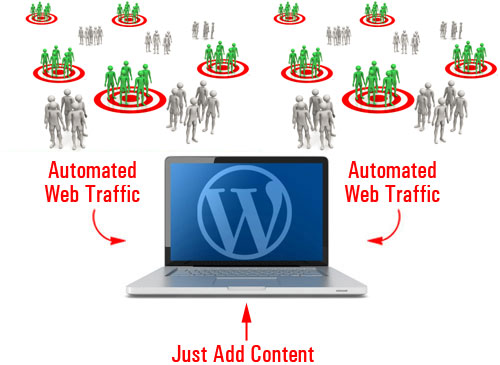
(How much better would your business be if you could automate the process of driving traffic to your website?)
While many experts often make difficult solutions look simple, it rarely turns out to be that way.
Expertly configuring a WordPress site involves more than just installing a website and configuring a few settings. It involves knowing where to tap! In other words, knowing things like:
- Which programs you need to install to get certain functionalities on your site.
- Which accounts need to be set up to get specific outcomes
- Which options need to be configured in order to make sure processes will run to plan, etc.
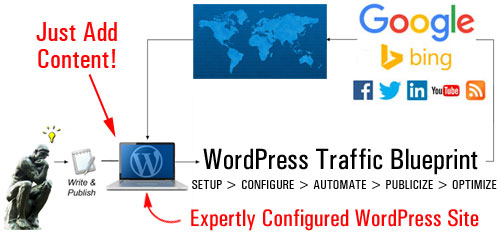
(Driving web traffic automatically with WordPress is a process that requires knowledge and expertise)
This part of the traffic automation system is not technically difficult, but it’s quite involved. This is because it’s not as simple as installing and configuring a plugin, tweaking some settings in your admin area … it’s all this and much more.
The configuration stage is a complex process that involves your web hosting server, your website, and various external sites …

(The configuration stage involves more than just configuring a few settings in WordPress)
If we try to flowchart all the steps involved in the configuration process, it would look like this …
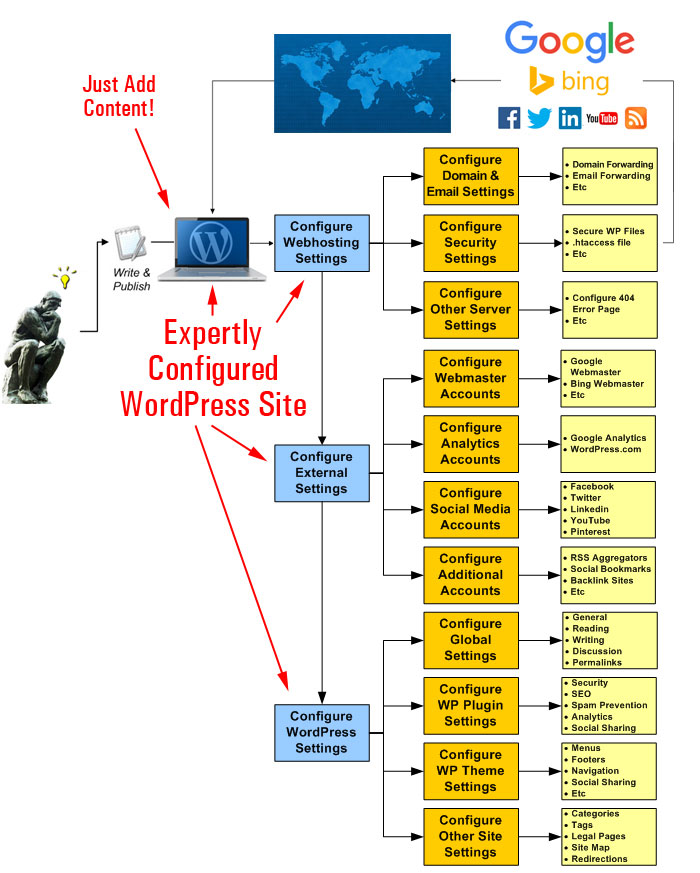
(A simplified diagram showing the steps involved in the configuration process)
Let’s take a better look at what’s involved.
Your Web Server
We’re not talking about the process of configuring your web-hosting account for website installation purposes. What we are talking about, is tweaking settings and options in your web server specifically for handling all web traffic …
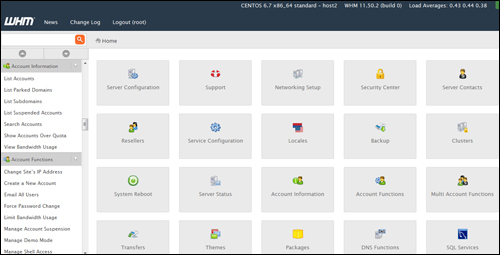
(In the configuration phase, your webhosting account settings need to be checked for handling both good and bad traffic)
Not all traffic is welcome traffic. Some of the traffic your website may attract will be unwelcome traffic like spam, security threats, bot-hacking attempts, etc.
This area of the configuration process, therefore, is all about planning for both bad and good traffic and adjusting settings in your server accordingly. This can include looking at things like configuring server-level spam protection and preventing security threats, to configuring domain and email redirections, setting up htaccess and error page redirections, etc …
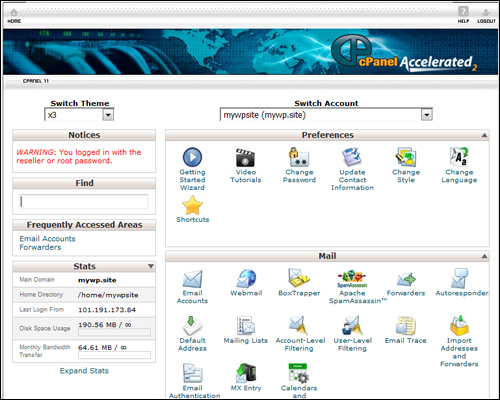
(Have you configured your control panel settings for handling things like email forwarding, page error redirects, etc?)
After checking your web server settings and configuring these, the next step is to configure various third-party sites and services.
Integration With External Solutions
The basic concept of setting up external sites is that all of your content should be published from one central location (your site) and from there, it will get syndicated automatically to other components of your traffic system, or notify traffic-related web properties and services.
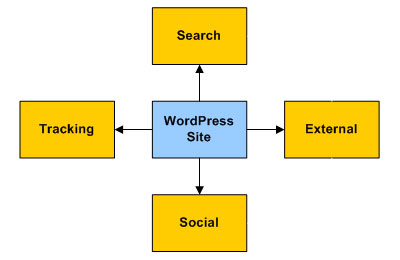
Once you add these external platforms to your system, content pointing back to your site will get automatically fed to search, social and aggregator sites. Your content will then receive increased exposure online, helping you tap into a new audience and source of traffic.
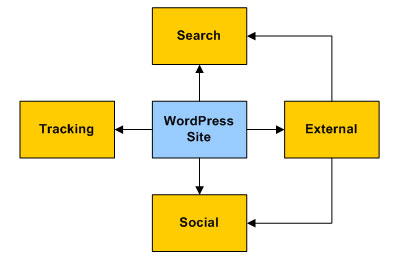
Some of the sites and services will need to have accounts set up before configuring your settings to save time and some will need to be done later, during the automation phase.
For example, here are just some of the accounts you will need to have set up before configuring your WordPress settings:
Google Webmaster Tools
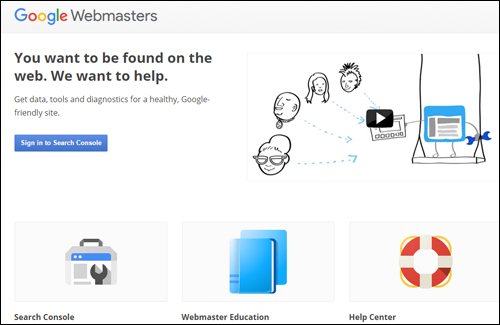
(Google Webmasters)
Google Webmasters lets you inform Google about your site’s pages, submit XML sitemaps for faster page indexing, and provides site owners with a range of useful data, SEO tools, and diagnostic reports about their website.
Once your account with Google Search Console are set up, use the information with web traffic-related settings and notifications in WordPress and other applications.
Google Analytics
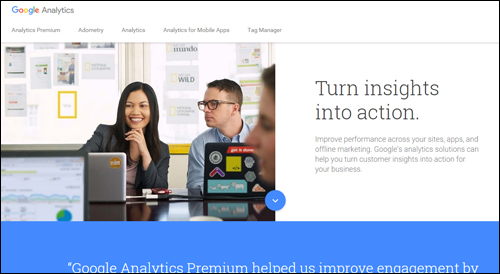
(Google Analytics)
Google Analytics lets you improve your website’s results, SEO, marketing activities, and more, by tracking all user behaviour, pages visited, keywords searched for, search engine and organic referrals, etc.
Once your Google Analytics account is set up, you can add visitor tracking information to WordPress via a simple plugin and feed data automatically to many other useful applications and web properties.
Bing Webmaster Tools
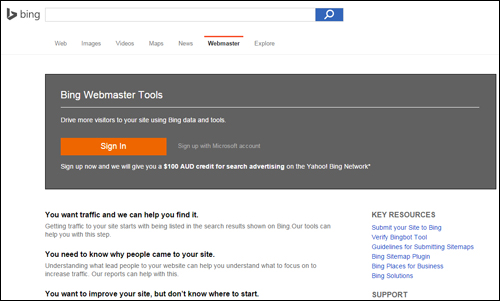
(Bing Data And Tools)
Bing Webmaster Tools is similar to Google Search Console. Once your account has been with Bing are set up, this information can be used to integrate and automate web traffic settings in WordPress and other applications.
WordPress.com
(WordPress.com)
As discussed in Part 2, WordPress offers website owners a self-hosted (WordPress.org) and a hosted (WordPress.com) option. We recommended choosing the self-hosted WordPress option if you plan to grow a professional web presence.
WordPress.com (the hosted option), however, provides a number of useful tools, which various WordPress plugins can access. We recommend setting up an account with WordPress.com, therefore, and we’ll explain how to integrate this into your traffic generation system in Part 4 of this article series.
Social Media

(Syndicate your content automatically to your social media and social bookmarking accounts and attract new traffic to your site)
You will need to set up your social media accounts before you can configure these as part of your traffic generation system.
After setting up and configuring everything, you will be able to syndicate your content automatically to your social media and social bookmarking accounts and attract new visitors to your site.
You should have accounts set up with all of the main social networks – Facebook, Twitter, YouTube, Pinterest, LinkedIn, etc.

There are lots of social bookmarking sites you can syndicate your content to. You don’t need to create accounts with all of them, just select those that will work with your system and/or content syndication tools.
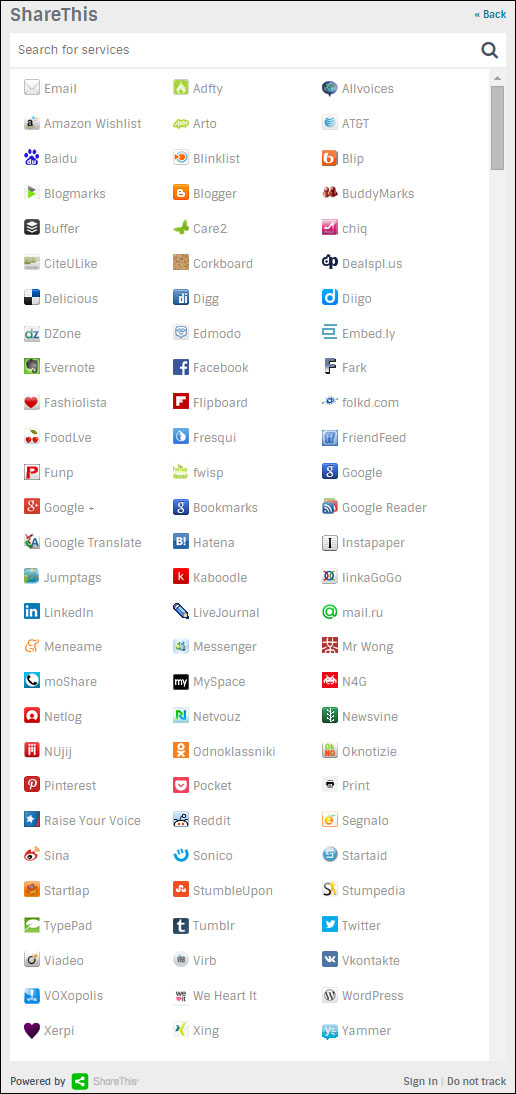
(There are loads of social sites you can syndicate your content to. Image source ShareThis.com)
Additional Platforms, Aggregators, Etc.
There are many emerging web platforms and RSS aggregators that can serve as secondary-level sources of traffic. Some are free or provide free levels, and some offer a range of pricing plans to suit different users.
For example, here is a content aggregator site that allows you to add your WordPress blog feed …
RebelMouse
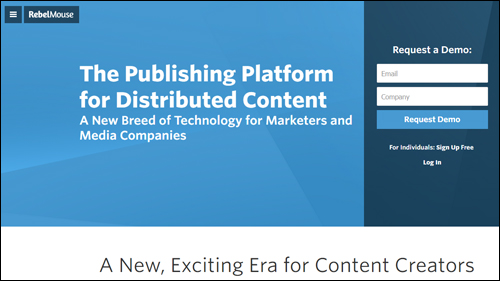
(RebelMouse)
RebelMouse is a news aggregator for your RSS feeds and social profiles. Your content is displayed in a Pinterest-like format and users can follow your own RebelMouse website.
![]()
There are many different platforms you can incorporate into your own traffic blueprint. Please feel free to contact us if you would like to explore some of these and discuss a configuration strategy to suit your needs.
Once you have configured your server settings and set up external service accounts, it’s time to configure WordPress.
WordPress Site Configuration
The first step in configuring your site for traffic is to ensure that its global settings have been set up correctly.
Let’s go over some of the important areas.
Global Settings
By default, WordPress includes a Settings menu that allows you to set up your site’s global settings …

(WordPress settings section)
General Settings
Content entered into fields like Site Title and Tagline can influence your site’s SEO, search indexing, etc …

(Settings Menu – General Settings)
Writing
The Writing Settings area contains one of the most important and frequently overlooked traffic notification systems available to WordPress users …
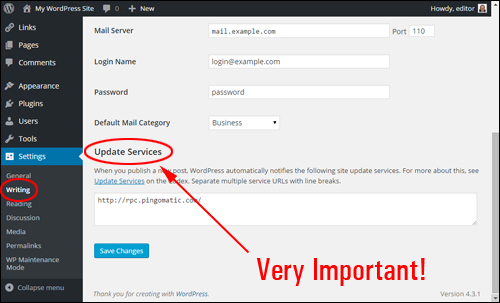
(Global Settings – Writing Settings Area)
As described below the Update Services section,
When you publish a new post, WordPress automatically notifies the following site update services …
Unless you or your webmaster have intentionally configured your settings to prevent search engines from indexing your site – see next section, then your site will automatically notify the update services entered into the Update Services section
With an ‘out of the box’ WordPress installation, this section displays only one entry …
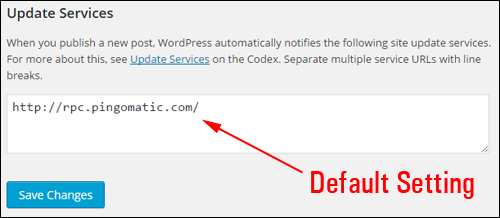
(Update Services – A Powerful Traffic Feature)
You can notify dozens of update services automatically with WordPress …
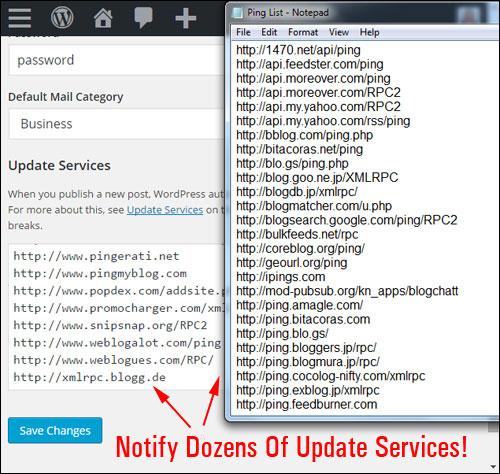
(WordPress lets you notify dozens of update services automatically!)
![]()
Download A Comprehensive List Of Ping Services For Your WordPress Site!
Click the link below to download a comprehensive list of reliable and authoritative ping services for your WordPress site or blog:
Download A List Of Ping Services For Your WordPress Site
***
Note: If you need help setting up the list of ping services on your site, we recommend using a professional web services provider. You can find professional WordPress service providers in our WordPress Services Directory.
Reading Settings
This section affects how your content gets seen by visitors when they visit your home page and blog pages.
The syndication settings on this page can have an influence traffic. For example, your choice to display the full content vs a summary of your post, affects how your content shows up in RSS feeds and RSS email campaigns, and could impact someone’s decision to explore your content further, and whether or not they will visit your site to view the rest of the content from a partial feed, or read the content in full without the need to click through to your site.
The main setting in this section as far as your traffic system is concerned is whether the Search Engine Visibility feature is ticked or not.
Generally, you want search engines to visit your site. Leaving the box unchecked allows your site to instantly ping various update services when a new post is published (see Writing Settings above). Unless there is a specific reason to discourage search engines from visiting your site, do not check this box …
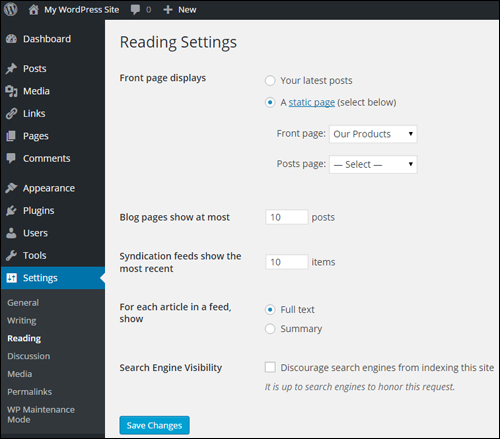
(Global Settings – Reading Settings Screen)
Discussion
Although discussion settings are mostly concerned with how users engage with content on your site, you have the option to allow notifications to sites linked to from your content, and to allow link notifications from other blogs (pingbacks and trackbacks). This can work for you, but it can also drive bad traffic in the form of SPAM comments …
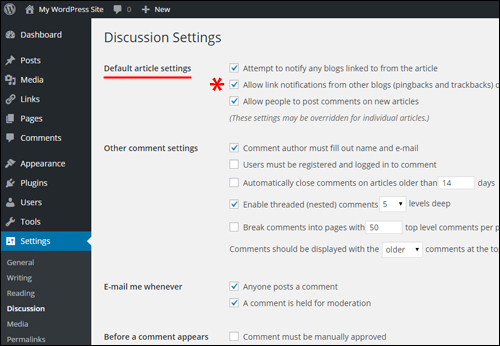
(Settings Menu – Discussion Settings Section)
Permalink Settings
Permalinks enable your site to display posts with search engine-friendly URLs …
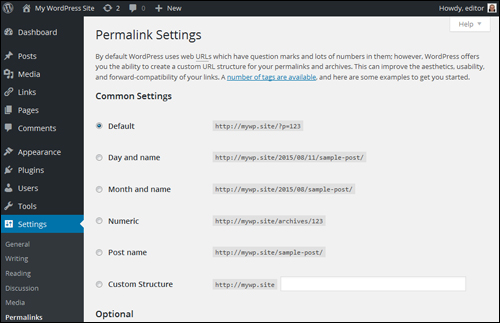
(Global Settings – Permalink Settings)
The examples below show some of the options for configuring your permalink URLs …
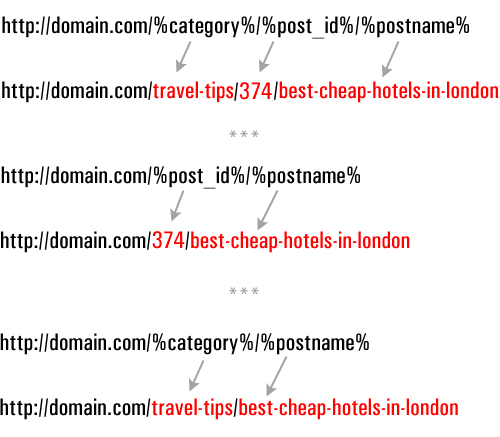
(Configuring post permalinks)
We have written a detailed tutorial on using permalinks here: Using Permalinks To Improve Your WordPress SEO
Plugins
The WordPress developer community makes available thousands of plugins that help to add almost every kind of functionality imaginable to your site, including plugins that add traffic generation capabilities.
Let’s look at examples of plugin categories and plugins that can help to attract more visitors to your site
Blog Defender Security Plugin
Once again, it’s important to configure your site for handling both good traffic and bad traffic. Regardless of the type of business you run or plan to run online and how small you think your web presence is, you cannot afford to ignore the importance of securing your websites.
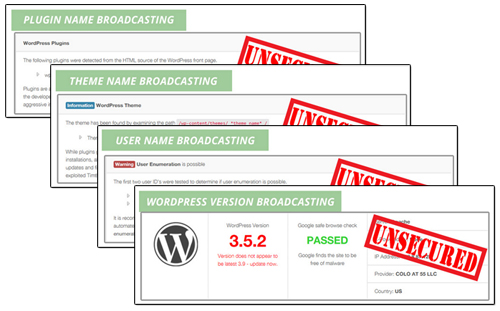 (WordPress Security Plugins help prevent bad traffic from harming your web presence)
(WordPress Security Plugins help prevent bad traffic from harming your web presence)
Security plugins like Blog Defender help to make your blog invisible to hackers and botnets.
For more details, go here:
SEO Plugins – Yoast SEO
SEO plugins help drive more traffic by improving improving the way search engines find, crawl and index your web pages …

(SEO plugins help drive traffic by making your website more search engine friendly)
A plugin like Yoast SEO can improve your site’s search engine optimization. Once properly configured, the Yoast SEO plugin not only makes your website easier for search engines like Google and Bing to index, it allows you to specify how your content will show up in Google’s search results and social media sites Facebook, Twitter, and Google+.
WordPress Social Sharing Plugins
Allowing visitors to easily share your content online can help to increase traffic to your site, especially if your site provides great content that adds value to readers.

(You can easily add social sharing to your site using free or inexpensive plugins)
You can easily add social features to your website with WordPress plugins.
Most social sharing plugins allow you to choose which social sites your content can be shared to, embed social buttons into your content, set up custom post messages, display/hide share counters (e.g. number of followers), etc. Some social sharing plugins even allow you to protect content which visitors can unlock by linking or tweeting your page.
WordPress Traffic Generation Theme Settings – Configuration
As well as configuring various plugins, many WordPress themes also include features that help improve your site’s traffic generation capabilities.
For example, in addition to options and settings for configuring design and layout aspects of your website, many themes also include options for improving search optimization and site navigation structure for faster indexing, easily add tracking, social sharing buttons, etc …
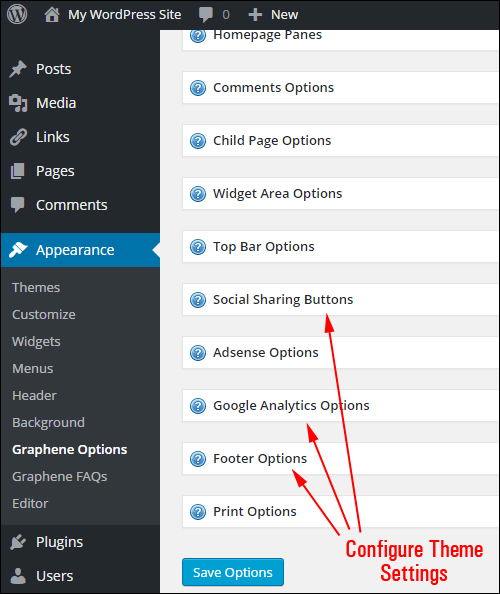
(Many WordPress themes like Graphene (a free theme) have built-in traffic optimization features)
With many WordPress themes, adding social sharing buttons to your website is as easy as clicking a button …

(Many WordPress themes provide users with built-in social sharing features that can be easily turned on with the click of a button)
Configuring Other WordPress Sections
Last but not least in the web traffic system configuration process, are the areas that need to be set up outside of the global settings.
These include:
Compliance Web Pages
Once again, when preparing your site for an increase in traffic numbers, it’s important to plan not only for both bad and good traffic but also for all the situations that can damage your business when more and more people find and begin to visit your website.
If you engage in any form of commercial activity online, you need to ensure that your website is compliant with regulatory agencies.
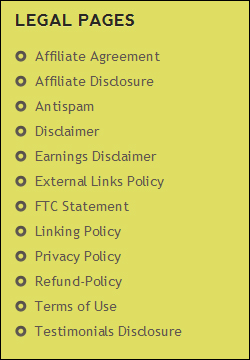 (Is Your Website Or Blog Compliant?)
(Is Your Website Or Blog Compliant?)
If you need help adding compliance pages to WordPress, see this article:
WordPress Post Categories & Tags
Post tags and post categories help improve traffic by improving your site’s search engine optimization.
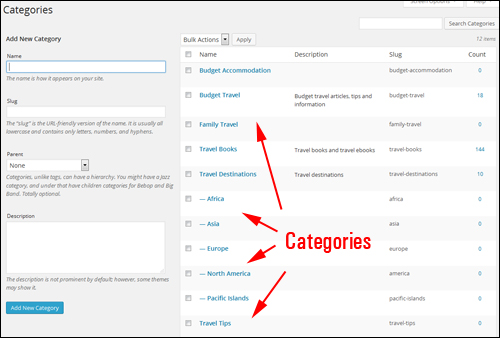
(Post categories help improve traffic by improving your site’s SEO.)
As we strongly recommend in this article, your site’s post tags and post categories should be reviewed and set up earlier on, during the Website Planning Phase.
In the configuration phase, you will want to review and make sure that your site’s post tags and post categories have been set up correctly to deliver optimal results.
Add A Site Map
A visitor site map that lists all of your site’s posts and pages is not only a useful navigation tool, it can also help external sites find more of your web content …
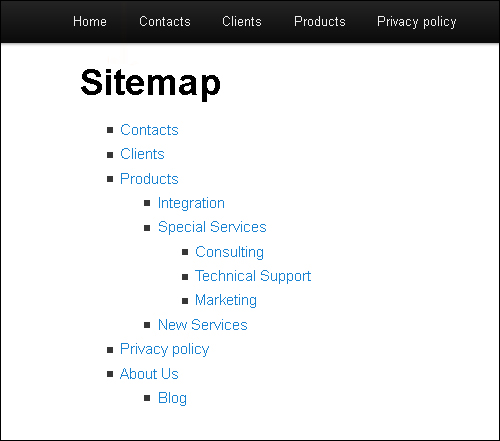
(A site map is not just great for visitors, but for traffic too!)
![]()
An HTML site map and an XML sitemap are not the same thing. Although search engines like Google will index your site just using an XML sitemap (which plugins like Yoast SEO will create for you – see earlier section), making it easier for visitors to find more pages on your site can result in increased traffic.
Your Site’s 404 Error Page
When visitors type in the wrong URL or click on links pointing to an incorrect destination on your website, they are presented with an error page (known as a 404 page) …
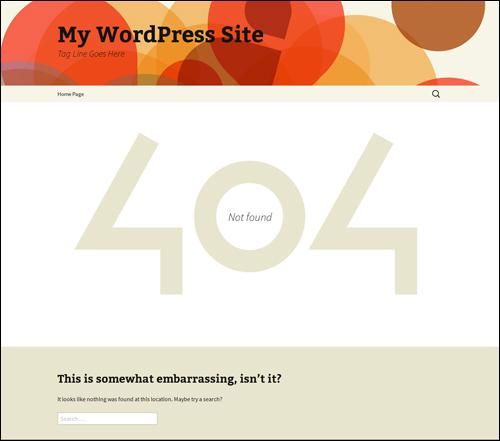
(Default WordPress 404 Not Found page)
Configuring your 404 page allows you to redirect web traffic that may otherwise be lost. …
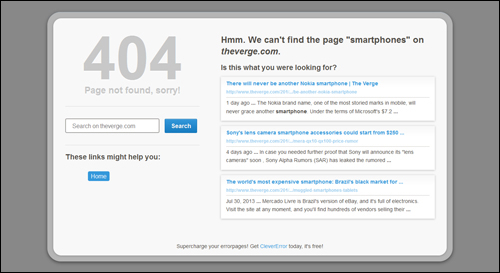
(Configuring your 404 Not Found page allows you to recover traffic that may otherwise be lost.)
![]()
Although a 404 Not Found page can be set up on your web server, there are several plugins for WordPress that allow you to easily configure your 404 page inside your WordPress admin area.
WordPress Traffic Automation Blueprint: Configuration Phase – Summary
Once your website has been expertly configured and fully set up, all you need to do to automatically begin attracting web traffic is publish new content consistently.
The process of expertly configuring your WordPress site, however, is quite involved and elaborate and requires the configuration and integration of a number of different components and web properties …
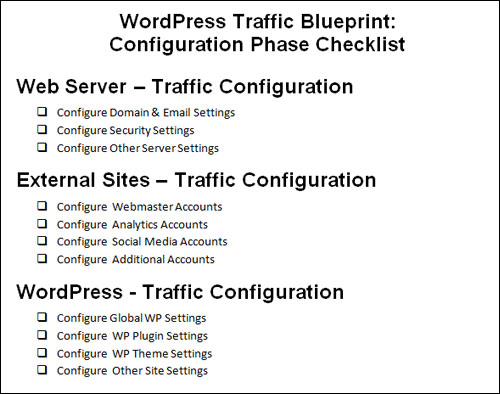
(Traffic Blueprint – Configuration Checklist)
![]()
The skills and knowledge required to perform the configuration process typically takes many website professionals a long time to acquire.
Once you have expertly configured your WordPress site, the next step is to automate the aspects of the process that can be automated. This step is explained in the next article in the series.
This is the end of Part Three
To keep reading, click on the link below:

![]()
This tutorial is part of a comprehensive series of articles aimed at helping small business owners learn how to grow their business online cost-effectively with a WordPress-driven website and proven online marketing strategies.
Get Notified When New Tutorials Are Published – Subscribe To Our Site!
***
"This is AMAZING! I had learnt about how to use WordPress previously, but this covers absolutely everything and more!! Incredible value! Thank you!" - Monique, Warrior Forum
***

